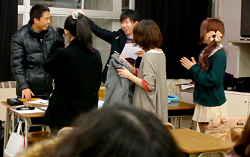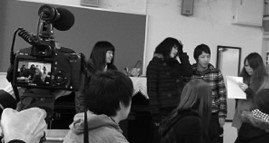Building Wisdom and Creativity
![In midlife, enhanced callosum communication sparks creativity and wisdom [National Library of Medicine, S Munakomi, MD]. In midlife, enhanced callosum communication sparks creativity and wisdom [National Library of Medicine, S Munakomi, MD].](https://www.ncbi.nlm.nih.gov/books/NBK448209/bin/dti72.jpg)
As you age, your brain can do more than maintain its abilities—it can improve significantly. In your mid-forties, research shows enhanced communication between the brain’s left and right hemispheres, facilitated by the corpus callosum, a thick band of nerve fibers connecting them (Davis et al., 2008). This improvement reflects better cognitive integration, supported by stable or strengthened white matter integrity in midlife (Salat et al., 2005). White matter is the brain’s wiring network that enables fast, efficient communication between regions. Lifelong learning and neural reorganization further enhance these gains, allowing cognitive abilities like expertise to continue growing (Salthouse, 2019).
A study by Cabeza et al. (2020) highlights that this enhanced connectivity, called hemispheric integration, boosts creativity, problem-solving, and emotional regulation. In other words, as our frontal lobes become fully developed in our mid-20s, we become wired for maturity. When the enhanced communication flows through the corpus callosum in our mid-40s, we become wired for wisdom.
A caveat: the increased communication between the hemispheres through the corpus callosum is not the outdated right-brain-left-brain myth, which falsely suggested each hemisphere has fixed roles (e.g., creativity in the right, logic in the left) (Nielsen et al., 2013). Instead, this enhanced flow reflects a more collaborative brain network, growing more efficient with age, like a seasoned team refining its coordination (Davis et al., 2008). As the brain matures, the corpus callosum facilitates integrated activity across both hemispheres, supporting cognitive gains rather than rigid specialization (Corballis, 2014).


![Your brain can keep growing, adapting, and learning at any age, if you are willing to put in the effort [Image: Copilot] Your brain can keep growing, adapting, and learning at any age, if you are willing to put in the effort [Image: Copilot]](/images/Images/best-years-for-adult-brain600.png)


![Your brain can keep growing, adapting, and learning at any age, if you are willing to put in the effort [Image: Copilot]](/images/Images/best-years-for-adult-brain300.png)

